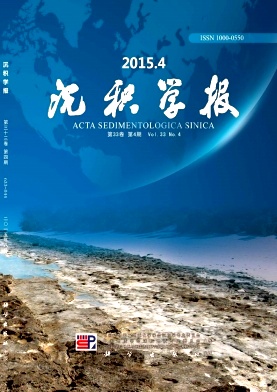Single Stage and Sedimentary Evolution Process Analysis of Braided River: A Case from SuX block of western Sulige gas field in Ordos Basin
doi: 10.14027/j.cnki.cjxb.2015.04.016
- Received Date: 2014-07-09
- Rev Recd Date: 2014-10-12
- Publish Date: 2015-08-10
-
Key words:
- braided river /
- western Sulige gas field /
- composite braid riverway /
- single stage riverway /
- sedimentary evolution process
Abstract: Currently, Sulige gas field is in increasing production stage, the reservoir of He8 remember in Permian are more and more complex with the rolling exploration in progresses. Originally one well drilled into a thick channel sandbody, but the one of neighboring well was instead of inter-channel mudstone. The characteristics of fast facies transition have brought great challenges for large-scale implementation of horizontal wells. In fact, the main reason is that the overlay rules of sandbody are not clear. The reason of sandbody was not single stage, but multi-stage. The multi-causes, multi-stage and criss-cross stacked channel sandbodies in space were the main reasons which took shape the huge thick braided river sandbody. The center often is made of multi-stage channel sandbodies.The Suxi block in Sulige gas field has been researched by predecessors who concluded that He8 member mianly developed braided river, and the result has been achieved wide recognition. The target bed thickness generally is 15~20 m. The study area located between the southeastern Su48 block and he northeastern Su47 block whose area is about 627 km2. The core and drilling well data can not only show the underwater deposition, but also no obvious delta front sedimentary, and the lower He82 sub-member mainly developed braided river deposits. The division time of stage is actually a part of the reservoir configuration. According to the previous configuration theory, braided river reservoir architecture can be divided into four levels (composite channel, single channel, channel bar, hyperplasia body), this study belong to the second level. The braided river of sedimentary micro-facies belongs to level, therefore, the identification of single stage river, compound, and sedimentary evolution analysis from composite channels can been researched based on the result of sedimentary micro-facies.It is always the emphasis and difficulty of single stage fluvial sandbodies from composite braided riveway in reservoir architecture. Especially, it is the most difficult at the aspect of single stage identification and combinations from multi-stage stacked sandbodies, and the evolution of sedimentary braided river was finished. In the process of the research, the complex river stages were divided through continuous cores verification and “single stage calibration method based on removal compaction effects”, the riverways had been reset by “relaxation rebound techniques” based on removal compaction effects. The single stage riverway were tracked and compared after using “the sand thickness center line connecting method” based on modern sedimentary and geological models and theories, then, the results were confirmed by interference well testing which can confirm that the time of stage redefinition and the predicted results were reliable. Based on above the evolution and sedimentary history was researched according to the order of sedimentary development. The research result show that these research methods will help to reveal stacked sands, improve the rate of sand drilling, and it is also convenient to carry out large-scale deployment and post-horizontal well geosteering operations and to provide a theoretical basis so on for oil production practice simultaneously.
| Citation: | SHAN JingFu, ZHANG Bin, ZHAO ZhongJun, LI FuPing, WANG Hui, WANG Bo. Single Stage and Sedimentary Evolution Process Analysis of Braided River: A Case from SuX block of western Sulige gas field in Ordos Basin[J]. Acta Sedimentologica Sinica, 2015, 33(4): 773-785. doi: 10.14027/j.cnki.cjxb.2015.04.016 |






 DownLoad:
DownLoad: